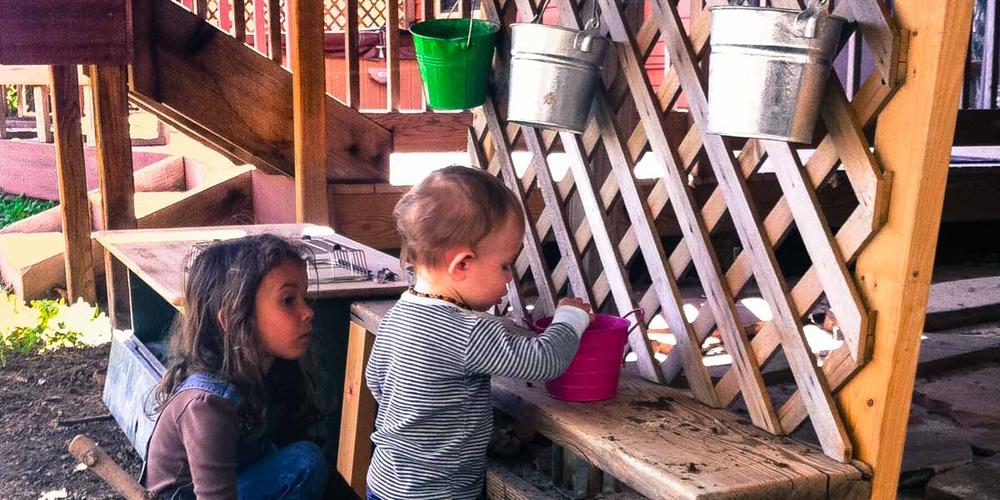
After reading Jason Runkel Sperling?s last book, I was really interested in his other work. His mud kitchen book really appealed to me, especially since I wasn’t sure I would need one in the first place. Turns out I did.
The backyard play experience can be a daunting one for parents and children. Usually the kids need guidance and all-time adult supervision, and they soon become bored with the usual things they see lying around. The way our children play has changed dramatically during the last quarter of the century, with fewer outdoor activities and much less autonomy to wander around on their own. In places were the weather allows it, a mud kitchen is a truly great thing to have. As the author says:
A backyard mud kitchen provides a gateway experience that supports children?s natural inquisitiveness. It supports their need to develop cognitive, gross and fine motor skills, and foster their relationship with the outdoors and organic materials–all while giving them a feeling of independence and emotional well-being.
 Sperling is a true geek. After doing a lot of online research, he undertook the task of building a mud kitchen from scrap materials in a serious way. He applied a scientific approach to playing and, in his book, he expands on all the needs and problems you may face.
Sperling is a true geek. After doing a lot of online research, he undertook the task of building a mud kitchen from scrap materials in a serious way. He applied a scientific approach to playing and, in his book, he expands on all the needs and problems you may face.
The very first and obvious one is the setup. Since there are ton of Pinterest images that feature spotless mud kitchens with stainless steel sinks and fancy counters, it really seems building one is just not worth the effort. However, this is a misconception. As with many things that need children’s involvement and imagination, a simple flat surface that is stable and some hangers are as good as anything. The idea of the mud kitchen will spark the rest: sticks and other cooking implements, buckets, mud pancakes, fancy ingredients that can be scoured from the surrounding trees, and the like.
The next thing is mud. Good mud is important, since it needs to be sticky in a good way and make a smooth blend when combined with water. As it dries up, it has to harden into satisfying mud balls your children can check up on later. The good thing about this kind of mud is that it can be pounded, grinded, and re-used, all part of hands-on sensory play.
The water supply is also an issue, since water dripping all over the place is not a good idea. However, a self-closing spigot can help your children and become their autonomous water source. (I’m all for self-serving water and self-serving everything; it means they are having a good time and that they don?t need you around that much.)
For expanding your experience, you can add and take away implements that will keep your children interested, and Sperling has tons of ideas for that. There’s the oven and the dinner table–the kitchen sign and the wash basin, as well. The images of his kids having a blast are sufficient proof that his ideas work.
The quest for unstructured play can spark from there, and keep going to other areas of the yard. Sperling’s ideas of loose parts, adventurous play grounds, and play work have a great role in them. For more information it?s a great idea to visit his website.
His next book, Unplugged, will be coming out soon, and I will be talking about it as well!
Mud Kitchen in a Day is available wherever books are sold.
Disclosure: I was given a copy of this book for review purposes
Featured image by Jason Runkel Sperling



